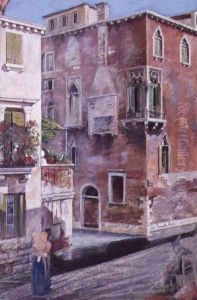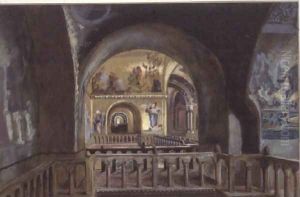Sir Caspar Purdon Clarke Paintings
Sir Caspar Purdon Clarke was an English architect, art historian, and museum director, born in London on December 21, 1846. His early education and career were rooted in the arts and architecture. Clarke was trained at the South Kensington School of Art, which would later become the Royal College of Art. He initially worked as an architect and designer, where he cultivated his expertise in textiles and decorative arts.
Clarke's career path took a significant turn when he joined the South Kensington Museum, known today as the Victoria and Albert Museum (V&A), in 1873. He started as a junior officer, but his talent and dedication to the arts saw him rise through the ranks. By 1882, he became the Keeper of the Indian Section, reflecting his interest in and knowledge of Indian art and artifacts. He was instrumental in developing the museum's collection of Indian artworks, eventually organizing the Indian and Colonial Exhibition in London in 1886.
His work at the V&A was a prelude to his international influence on museum curation and administration. In 1905, Clarke was appointed as the director of the Metropolitan Museum of Art in New York, a prestigious position he held until 1910. During his tenure, he was responsible for significant acquisitions and the expansion of the museum's collections, particularly in the areas of Islamic and Asian art. He also oversaw the beginning of the museum's collection of European paintings.
Clarke's contributions to the art world were recognized by the British Crown, and he was knighted in 1897 for his services to the arts and museum management. He was a member of numerous societies and institutions dedicated to the arts and archaeology, including the Royal Institute of British Architects.
Sir Caspar Purdon Clarke passed away on August 29, 1911. His legacy is reflected in the breadth of collections he helped to establish and the impact he had on the development and modernization of museum practices. While he may not be as widely known as some of his contemporaries, Clarke played a pivotal role in shaping the appreciation and understanding of non-Western art in Western institutions.

